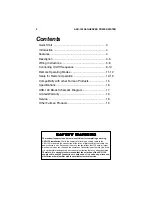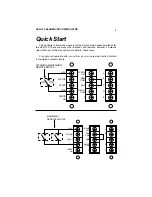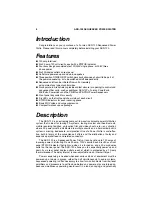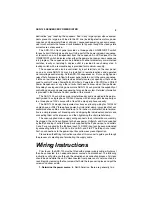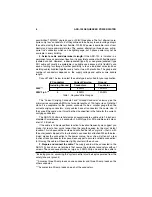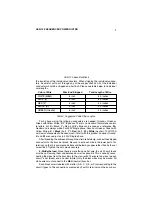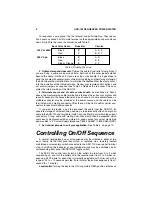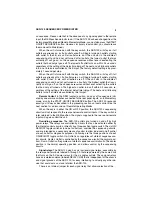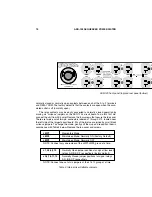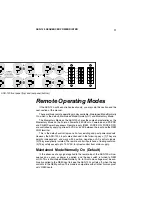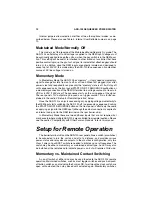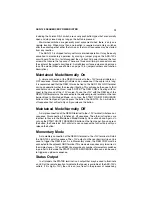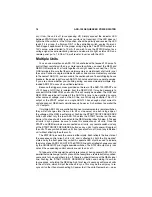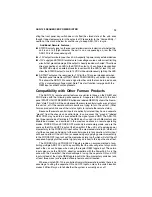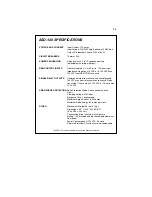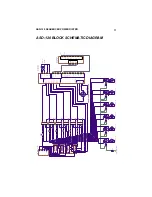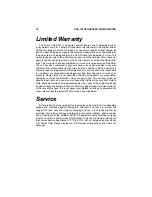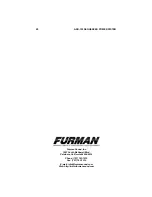
ASD-120 SEQUENCED POWER DISTRO
15
ating the front panel key switch does not affect the stored state of the unit, even
though it does temporarily turn the outputs off. Please refer to the “Compatibility ...”
section of this manual below for another way to keep ASD-120’s in sync.
Additional Remote Features:
●
STATUS output signal on the rear panel allows remote indication of whether the
unit is on or off (high indicates the unit is on or sequencing on, low that the
ASD-120 is off or sequencing off)
●
+12V output terminal on rear has 40 mA capacity to power many external devices
●
+12V supply and STATUS terminals are true voltage sources, with current limiting
circuits that prevent damage if the output is heavily loaded or shorted. This allows
direct connection of an LED to the STATUS output, or if a voltage is desired from
the STATUS output, an external resistor in series with the LED (at least 1K) will
allow the STATUS output to rise to 12 VDC while simultaneously lighting the LED.
●
A START output on the rear goes to +12V (with a 1K source impedance) when
the front panel momentary START ON/OFF SEQUENCE push button is pushed.
This allows the ASD-120 to send a signal to other units that can be turned on and
off by a momentary voltage signal. Note: This start function is merged with the
REM input on other Furman products.
Compatibility with Other Furman Products
The ASD-120’s remote control features are similar to those on the PS-8R and
PRO Series with the following enhancements: A separate LED (next to the front
panel START ON/OFF SEQUENCE button and labeled REM ON) shows the “memo-
rized” state. This LED will be on whenever the remote control circuits are set to turn
the unit on, off if the remote control circuits are trying to turn the unit off. (Other
Furman products blink one of their status lights to indicate the remote status.)
Because the remote control inputs are optically isolated, they have a separate
“ground” from the chassis and control logic. In some cases this “ground,” labeled
REM COM, may need to be connected to the signal ground GND. The ASD-120
has three remote input terminals. The REM input is used in both Momentary and
Maintained modes, as described in the previous sections on remote operating
modes. FORCE ON and FORCE OFF work only in momentary mode, and are the
same as the ON and OFF inputs of the PowerPort. If the unit is off, applying power
momentarily to the FORCE ON input will set the memorized state to on, which will
start the on sequence. Applying further control signals (of any duration) to this input
will have no effect. If the unit is on (or sequencing on) applying power momentarily
to the FORCE OFF input will set the memorized state to off, which will start the off
sequence. Applying further control signals (any duration) to this input has no effect.
The FORCE ON and FORCE OFF inputs provide an assured method of con-
trolling multiple ASD-120’s, with no possibility that the units will get out of sync with
each other, as can happen when using the regular REM toggle input. These two
inputs also make the ASD-120 directly compatible with the PowerPort. As is the
case with the PowerPort, the disadvantage of using the separate ON and OFF
inputs instead of the single REM toggle input is that two momentary switches (and
at least three wires) are required at every remote control location.
Where a single ASD-120 is controlled from multiple remote locations there is no
advantage to using the separate ON and OFF inputs, unless the switch location
makes it difficult for you to tell whether the system is currently on or off.


